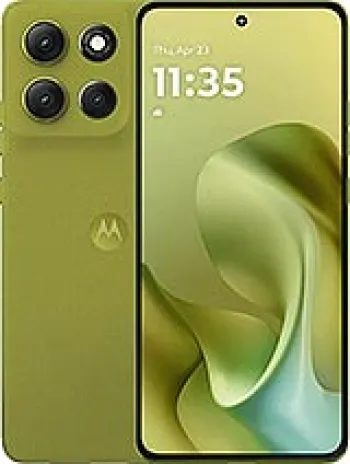
Introduction to Motorola WX295
The Motorola WX295 is a feature phone that was announced in April 2010 and released in July of the same year. It marks a point in time when feature phones were prevalent, offering essential mobile communication capabilities without the complexity and cost of modern smartphones. The device was designed to appeal to consumers seeking simplicity, robust construction, and affordability.
Design and Build
The Motorola WX295 has dimensions of 96 x 46.5 x 16.7 mm and weighs 83 grams, making it a compact and lightweight device. The body is designed to be both functional and durable, suited for everyday use. It features a clamshell design, which was popular at the time, providing an added layer of protection for the screen and buttons when closed.
Display
The phone sports a 1.8-inch TFT display with a resolution of 128 x 160 pixels. This small screen size is reflective of feature phones from that era, where displays were utilized primarily for basic navigation, viewing text messages, and simple graphics. The screen’s 65K color depth allows for minimalistic yet sufficient color representation, suitable for the device's limited use scope.
Camera
Equipped with a single VGA camera, the Motorola WX295 offers basic photographic capabilities. The 0.3MP resolution is aligned with the standard of feature phones during that timeframe, providing users with the means to capture images in low resolution. Video recording is not supported on this device, again suggesting its focus on essential functionalities rather than media-intensive tasks.
Memory and Storage
The phone includes a microSD card slot, providing the option for expandable storage to accommodate additional contacts, messages, and multimedia files. It supports up to 800 phonebook entries, which is ample for general use. Call records are also maintained, allowing users to keep track of their communication history.
Battery Life
The Motorola WX295 is powered by a removable Li-Ion 750 mAh battery. This considerable battery capacity, in combination with the device's low power requirements, allows for extended usage periods. The phone can last up to 580 hours on standby and provides up to 8 hours of talk time, ensuring reliability for users who require long battery life away from frequent charging.
Network and Connectivity
Operating on GSM technology, the Motorola WX295 supports 2G bands (GSM 900 / 1800), which were widely used globally at the time of its release. The device has support for GPRS Class 10 but lacks EDGE connectivity. Connectivity features include Bluetooth 2.0 for simple wireless data transfers and stereo FM radio with RDS for on-the-go entertainment. The absence of WLAN, positioning technologies, and USB connectivity underscores its focus on basic functionality.
Audio and Multimedia
The phone includes a loudspeaker for hands-free calls and basic audio playback, although it lacks a 3.5mm audio jack, limiting its compatibility with standard headphones. Despite this, the inclusion of a stereo FM radio and basic messaging capabilities like SMS and MMS offer sufficient multimedia interaction for the device’s target demographic.
Software and Features
Working as a feature phone, the Motorola WX295 operates without a conventional operating system like Android or iOS. It supports WAP 2.0/xHTML browser capabilities for light internet browsing. Users can enjoy pre-installed games, although the phone does not support Java, restricting additional application installations.
Market Position and Pricing
With a launch price of approximately 50 EUR, the Motorola WX295 was positioned as an affordable communication device suitable for budget-conscious consumers. Its feature set provides essential mobile capabilities, appealing to users who prioritized reliability and practicality over sophisticated features and high-resolution displays.
Conclusion
In summation, the Motorola WX295 showcases the hallmark features of a classic feature phone, offering a straightforward yet effective means of communication and basic multimedia interaction. Its compact design, robust battery life, and essential functions made it a suitable choice for users in need of an uncomplicated mobile device. Although discontinued, it remains a reminder of the transitional phase of mobile technology before the full onset of the smartphone era.
Key Features of Motorola WX295
- Compact and Lightweight: Weighs only 83g, making it easy to carry.
- Decent Display: 1.8-inch TFT with 65K colors.
- Expandable Storage: microSD card slot for additional storage.
- Long Battery Life: Up to 580 hours standby and 8 hours talk time.
- Bluetooth Connectivity: Version 2.0 for wireless connections.
- FM Radio: Stereo FM radio with RDS for music and news on the go.
- Affordable Price: Cost-effective at approximately 50 EUR.
Disadvantages of Motorola WX295
- Limited network technology with only 2G GSM and no EDGE support.
- No video recording capability with the main VGA camera.
- Lacks a selfie camera for self-portraits or video calls.
- No WLAN connectivity for accessing Wi-Fi networks.
- Does not support GPS for navigation and location services.
- Absent USB connectivity, limiting data transfer options.
- No 3.5mm headphone jack, limiting options for external audio devices.
- Small display size of 1.8 inches with a low-resolution screen.
- Lacks Java support, restricting the availability of additional applications.

View Also
More Phones
All Rights Reserved +14266 Phones © Mobilawy 2025

























